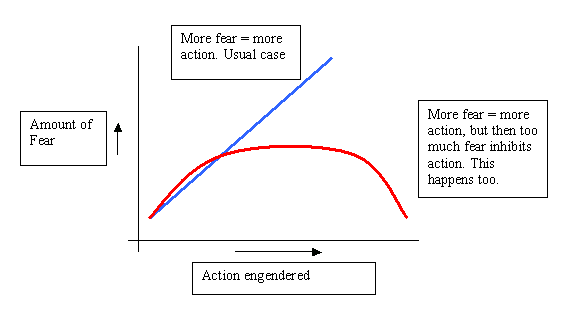
***Q. This topic was very interesting. I just kept thinking about how businesses could hire this Sandman guy and get their situations worked out. I kind-of felt like I learning how to 'tell the public what they want to hear'.
A. Not really. What the public wants to hear is, "We will not build the project." Or whatever they want. We want to communicate with the public and communications is two-way. We may modify the project to conform to local issues, if it is practical, we will almost always do that. We also want to tell them what we are planning to do.
***Q. Since the trucks do not carry any hazardous materials and no drivers drive their trucks to the trailer park, they shouldn't be worried.
A. Careful here. Of course they should not be worried. But if they are, you will only make them mad if you tell them their worries are unjustified. Also, you really only know what is supposed to be in the trucks, you are not sure. I'd start, "Folks, if I lived near you and saw these trucks coming by and heard the rumors that the carried toxic waste, I'd be worried too." Then, go on and give them facts why they should not be worried. But never tell them "don't worry."
***Q. Comment 1: “According to Sandman, public outrage is as real as any hazard. It is measurable and manageable and dealing with it is as is important as dealing with the hazard itself.” While communication is very important, I don't think it is prudent to say that dealing with it is as important as dealing with the hazard itself. People may be mad because something happened, or they were not informed in an ideal way, but people have some control over their reaction (one might choose to seek information and protect oneself, another will just be angry and raise one's own blood pressure regardless of the hazard) and the hazard, if poorly dealt with, will have more health impact.
A. Perhaps, and you have a good point. However often the health effect on humans is negligible or “unknown but expected to be negligible.” That is a scientific risk assessment says the effects are very small. If people were strictly rational, you could go home at this point. However this is often not what happens. People are enraged and all your scientific explanations are useless. Then communications is all-important. Granted, effective communication encourages compliance with behaviors that will protect the public, but I still think that dealing with the hazard is more important than dealing with the outrage. Also, if outrage leads to violence, it was again that person's decision to react in that way.
**Q. I haven't entirely bought into the idea that outrage is a risk component. I can understand some of the practical aspects of outrage and the complexities and messiness of doing things in America where everyone gets to have something to say. But I still tend to look at risk in a more technical way.
A. Yes, his "equation" is not technically correct. If you and I rewrote it, it might read: public's perception of risk = real risk + outrage.
**Q. I need a little more explanation of the outrage article that says to acknowledge current problems-dramatically. How exactly do you achieve this?
A. Th is from: http://www.psandman.com/articles/managing.htm a good site to read.
Acknowledge prior misbehaviour — repeatedly.
The prerogative of deciding when we can put our mistakes behind us belongs to our stakeholders, not ourselves. The more often and apologetically we acknowledge the sins of the past, the more quickly others decide it's time to move on.
*Q. Something I didn't know before: Everyone always gives communication majors so much guff about their degree. But Dr. Sandman (a doctorate in communications) shows everyone that there is great value in understanding human interactions.
A. Also, he was the right person at the right time. He was called in as a consultant on some very messy projects and learned "on the job.")
Q. Can you explain what Sandman meant [In his article Risk Communications http://www.psandman.com/articles/riskcomm.htm ] by, "Even if the fear-action relationship turns out to be a [upsidedown bowl]-shaped curve (that is, even if excessive fear is immobilizing),…"
A. In this section he is talking about the converse problem, getting apathetic people upset so that they take action, and discussing if people can get too scared to do anything. Engineers like graphs, so

His conclusion is that for apathetic people you are still likely to get more action from an emotional message.